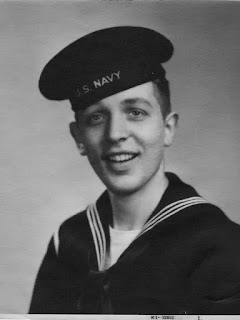In what was the largest internal migration of any group in American history, the Great Migration saw six million African Americans migrating from the South to the North drawn by improved economic opportunities and hopes of a better life. Black Americans were also escaping segregation and discriminatory "Jim Crow" laws in the South.
Another factor for the diaspora was the release of the movie Birth of a Nation in 1915 which portrayed the Ku Klux Klan (KKK) as a heroic force protecting the purity of white womanhood against sexually aggressive freed slaves after the Civil War. The D.W. Griffith film opened to nationwide protests and demonstrations.
 |
| "Birth of a Nation" still. The Black man was played by a white actor in blackface. |
From 1910 through 1929, Detroit experienced the fastest growing African American population in the United States--a 611% increase. During the same period, New York City had a 66% increase and Chicago had a 148% increase. Blacks settled primarily on Detroit's lower east side in minority isolated neighborhood called Black Bottom--originally named by the French for the dark, fertile soil found there. The area adjacent to Black Bottom became Paradise Valley--famous for its jazz clubs.
Thinking they had left "Jim Crow" laws enshrining segregation and racism behind, blacks found that in Detroit they were confined to "red lined" neighborhoods backed by real estate covenants preventing them from moving into Detroit's established white neighborhoods or suburbs. Blacks found that racial discrimination and white supremacy were entrenched in the North just as they were in the South.
But there was a significant distinction between the North and the South for blacks in this era. In the South, white people didn't mind living in proximity with blacks. The plantation culture depended upon it. But white people didn't want to work next to blacks. The North was the opposite. White people tolerated working with blacks, but they didn't want black people in their neighborhoods.
 |
| The assembly line |
Early on, black women overwhelmingly worked in domestic service jobs. Eventually, clerk positions opened up in the retail industry for them. Black men worked in the service industry at hotels, restaurants, passenger trains, and public works. The jobs paid little, offered no fringe benefits, and provided no chance for advancement. Labor shortages during World War One opened up good jobs in shipyards, foundries, steel mills, auto factories, and meat packing. Unskilled black laborers took the most undesirable and dangerous jobs wherever they were employed.
 |
| Henry Ford |
With improved economic conditions, a black inner city culture developed catering to the needs of African Americans. Churches, markets, bakeries, barber shops, hotels, beauty parlors, clinics, jazz clubs, and adult entertainment developed. But every white and black Detroiter knew where the color lines were and woe to him that crossed them.
The high cost for African Americans penetrating the color line in Detroit is exemplified by the Dr. Ossian Sweet affair in 1925. As a youth in Bartow, Florida, Ossian witnessed the lynching of a black man in 1911. The angry white mob strung up the man while he pleaded for his life. The vigilantes doused him with gasoline and set him on fire. The crowd cheered when the flames enveloped him. Traumatized, the Sweet family moved to Detroit as part of the Great Migration.
 |
| Dr. Ossian Sweet and his wife Gladys |
When word spread of the purchase, whites viewed the incursion into their neighborhood as a violation of their "sacred" real estate covenant. The day the Sweet's moved in, a mob of "neighbors" assembled outside their home on September 8th, 1925 and cursed them with racial slurs. On the second day, the crowd grew to several hundred angry whites. Dr. Sweet and his family were joined by Sweet's two brothers and seven other friends--no doubt for a house warming get-together and a show of moral support. The hostile mob surrounded the house and started throwing rocks and bricks through the windows.
 |
| Clarence Darrow |
The Sweet trials were a referendum on race relations and segregation in Detroit ushering in a new era of political activism. But the graphic incident showed the risk of violating the city's red-lined neighborhoods. When it became clear to whites that black people were breaching their segregated neighborhoods, growing numbers of white Detroiters began to relocate to the expanding suburbs north, south, and west of the city in a demographic shift known as white flight.
 |
| Franklin D. Roosevelt |
The United States Congress debated making the FEPC permanent, but Southern legislators cut off funding and shut down the program in 1946. It took another twenty years before the Equal Employment Opportunity Commission was established to address many of the same issues.
World War II helped transform Detroit's social geography. Several distinct black communities emerged based on income, occupation, and status within black Detroit. Many African Americans fortunate enough to flee the crowded city center left as soon as they could; the rest were left behind to bear the brunt of being trapped in the city's worst housing. Detroit's shifting racial borderlands became battlegrounds for the future of the city. This racial frontier put blacks on a collision course with their white counterparts.
"Detroit Lost Neighborhoods: Black Bottom and Paradise Valley"
https://fornology.blogspot.com/2016/01/detroits-lost-neighborhoods-black.html


























